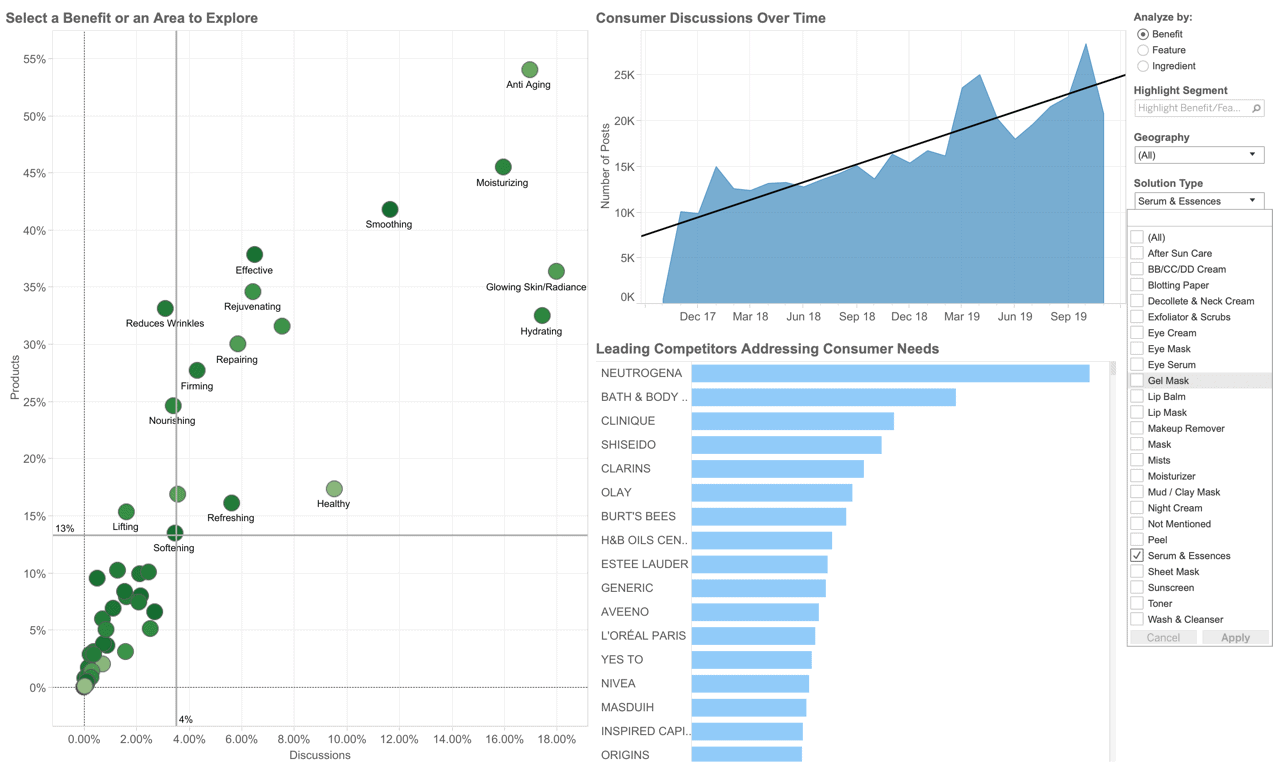
It is a mature offering but it does have two main problems, as called out in multiple research reports put out by Forrester. First, is accuracy. The world of social media is vast and unstructured, filled with jokes, sarcasm, hyperbole, emojis, idiomatic expressions, and often times involving abbreviations or shortened sentences. In addition, there are many ways to say the same thing which makes it very difficult for traditional NLP to extract proper context and sentiment.
The second issue with social listening is that it is hard to measure ROI as a standalone tool. Social listening is not a platform where one can ask specific questions; you get what you get but it may not be the information you are looking for or have any meaning without analyzing other data sets that provide additional context. In fact, despite the perception that social media is filled overwhelmingly with positive or negative posts, the vast majority (87%) of sentiments are neutral.
This means more information is needed in order to extract meaningful and actionable insights, such as what is important to a consumer, what do they care about, what does the product do that they like or don’t like, what benefits or other attributes do they associate the product with, what is the actual impact on sales, and so forth.
All this comes from better understanding context (back to point number one above) and connecting social listening to other data sets, breaking down data silos to create a single source of truth.
Connecting Social Listening to Other Data Sets Using Advanced Analytics Yields Actionable Insights
Forrester cites that 42% of respondents’ biggest challenge with social listening is extracting actionable insights. Quantitative data is plentiful, but qualitative detail is what is needed to inform strategies. The solution, Forrester states, is to adjust expectations of what social listening can deliver and tie it to a broader data ecosystem that can tell a full story.
New advancements in advanced analytics and NLP, combined with curated taxonomies make it possible to do this on an industry and category level. Advanced analytics can ingest a variety of data sources, going deep into social listening platforms to pull out “signals” that can be validated by comparing against “signals” pulled from other data sources, thereby generating connected insights.
For example, taking a look at the following Instagram post, how would a machine understand what is being discussed and how it relates to other products on the market?

This is but one example of how the challenge is tackled by Skai, but to be sure, this is only one example. There are 32 billion “people” active on Facebook every day; there are 500 million tweets sent, 2 million LinkedIn posts, 4.2 billion Instagram likes and so forth. The scale of data to collect and classify is enormous. Signals Analytics collects and ingests these sources along with other external data sources such as product reviews, sales data, patents, key influencer posts, blogs, forums and more to create a connected category data set. Analytic models then assess the relationship between all the different sources and surface trends and insights.
The below screenshot brings this concept to life. The model on the left shows under-addressed consumer needs for serums by comparing the level of consumer discussion against product claims that various competitors are making in the market. The bubbles towards the top right of the chart are the established trends; the bottom left designated nascent areas to explore.

If you are a marketer, you may use these types of findings to ensure that your product claims align with the perceived benefits and understand what other competitors make similar claims. You will want to understand whether consumer perception is the same or differs by channel and adjust your marketing campaigns or messaging accordingly. If you are in product innovation or consumer and market insights, you will want to understand what other needs do consumers have around serums that you can capitalize on, and if you are managing data initiatives for your enterprise, you will want to correlate this against actual sales, syndicated sales data and other sources to inform your true market positioning.
In this way, Skai helps to maximize the value of social listening by augmenting it with other external data sources, overcoming one of the main drawbacks of relying on social media as a standalone tool, and surfacing meaningful insights that can be acted on.
————————————–
*This blog post originally appeared on Signals-Analytics.com. Kenshoo acquired Signals-Analytics in December 2020. Read the press release.





